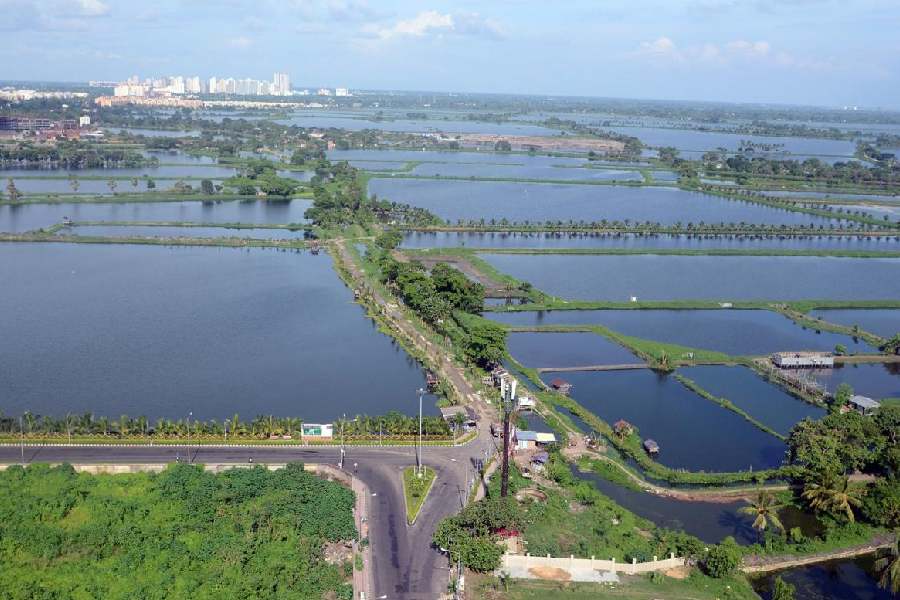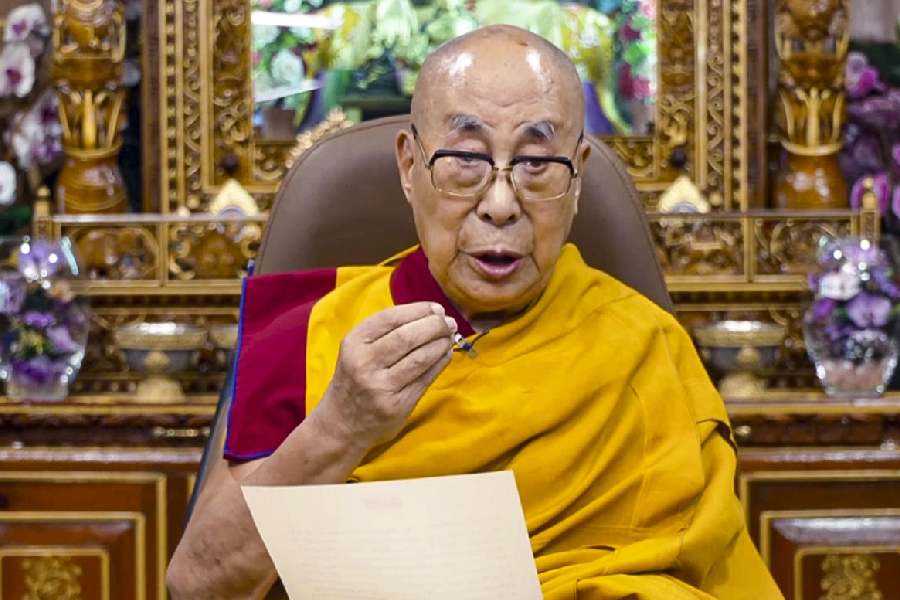 |
 |
Facing the towering Himalayas and surrounded by hills green with conifers, Rimbik appears perched on the roof of the world ? at least this part of the world. Situated at an altitude of 2,286 m, in the shadow of the mighty Kanchenjunga and its family, the town overrun with ferns and orchids is a tapestry of nature?s bounty and colourful people.
As can be expected, the main attraction is the stunning view of the Kanchenjunga, the world?s third highest peak, and other icy pinnacles. The psychedelic play of colours on the snowy surfaces of the titans has to be seen to be believed.
In contrast to Darjeeling, which is buckling under the pressure of tourists, and Kalimpong, which is quite hot in summer, Rimbik is almost secluded and offers cool comfort, even to those who have reached without advance bookings. An array of accommodation, from the simple to the luxurious, caters to every pocket and preference.
Darjeeling and Nowlekh can be seen from Rimbik during the day. The lights of the queen of the Eastern Himalayas glitter like jewels at night. Under the canopy of a star-studded sky, the sight is mesmerising.
The route to Rimbik is the same as that to Darjeeling till Ghoom. Besides buses and cars, you can take the toy train to Ghoom from Siliguri. The railroad has been in existence since 1878. In 1999, it was accorded world heritage status by the United Nations. A motorable road accompanies the serpentine tracks. The engine chugs past the Batasia Loop, a marvellous feat of engineering.
From Ghoom, turn left to reach Rimbik, via Sukhia Pokhri and Manebhanjan. The other route, via Mirik, merges with the Ghoom one at Sukhia Pokhri. A few buses ply between Rimbik and Darjeeling via Ghoom. Ideally, take a jeep or car to Rimbik from Ghoom or Manebhanjan.
Stop over at Lepcha Jagat on the way. The journey along a road lined with trees is very enjoyable.
Once you reach Rimbik, surrender yourself to nature?s magnificence. The turquoise sky and majestic mountains might fill you with an overwhelming urge to click, paint or simply enjoy the whisper of the unspoilt breeze. Roam at leisure along hilly trails lined with oak, pine and birch as birdcalls pervade the air.
The next day, try trekking to Srikhola, along a path marked with rhododendron and creepers leading to Sabarkumb Top.
An arduous climb will take you to Sandakphu, via Gurdum or Phalut, via Mulley. Experienced climbers generally end a trek of Sandakphu and Phalut at Rimbik.
Adventure enthusiasts can attempt trekking to Darjeeling via Lodoma, Jhepi and Bijanbari, crossing the Rangeet on the way. Far from the din about its more famous hill station cousins, Rimbik is full of unadulterated natural beauty, but with the basic tourist amenities. Its verdant charms can inspire verse in even the least romantic of souls.
Going
There is a decent motorable road (Hill Cart Road) to Rimbik, via Kurseong, along the narrow-gauge line from Siliguri. There are regular bus and taxi services to Ghoom. From there, you can rent a Jeep or Landrover to Rimbik. Alternatively, you can take the Mirik-Sukhia-Pokhri-Manebhanjan route. The journey takes about five hours from the Tenzing Norgay Bus Terminus in Siliguri. The closest broad-gauge railway stations are Siliguri and New Jalpaiguri. The nearest airport is Bagdogra, 140 km from Rimbik
Staying
There are hotels for all budgets ? from Rs 200 to Rs 800 per night. There is also a forest bungalow. To book the Darjeeling Gorkha Hill Council Trekker?s Hut, call 22821715. There are several places of tourist interest near Rimbik. Kalimpong, Kurseong, Mirik, Darjeeling and Lepcha Jagat are some of the attractions. For a closer view of Kanchenjunga and Mt Everest trek to Sandakphu and Phalut










